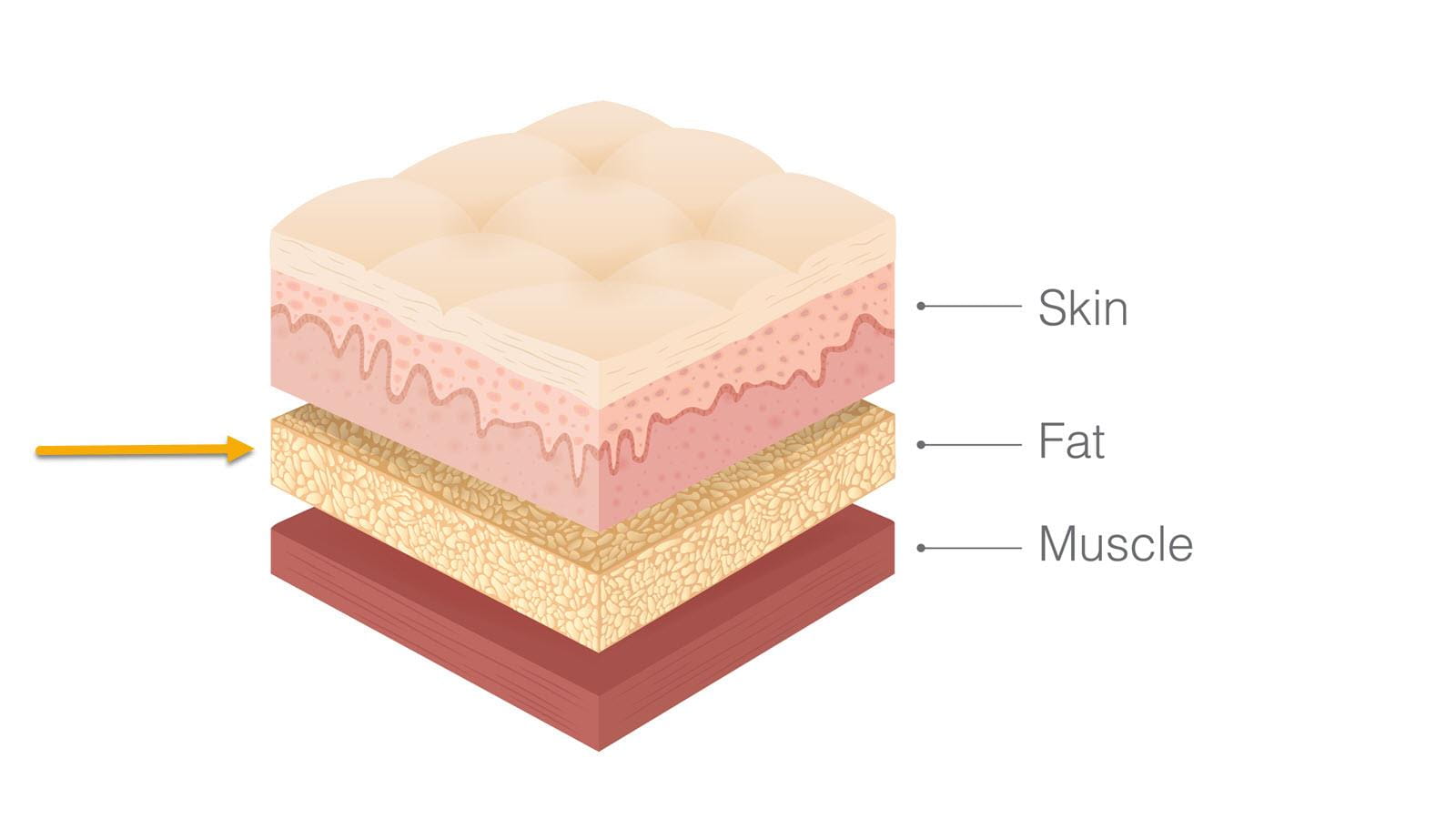When people think of medicine, they might think of a pill or capsule. But some medicines are infused into the body.
Intravenous infusions, or IVs, deliver medicine into the bloodstream through a vein, part of the circulatory system that branches throughout the body.
“Sub” means under and “cutaneous” means skin, so subcutaneous infusions deliver medicine under the skin. To understand how it works, it helps to know about the skin and what’s underneath. As the above illustration shows, below the skin layer, you’ll find fatty tissue and then muscle.
A subcutaneous infusion uses a needle at one or more infusion sites on a person’s body to pump medicine into the fatty layer between the skin and muscle. Not all medicine can be delivered subcutaneously – subQ for short. If someone needs regular infusion therapy, they can expect a detailed discussion with their health care team about whether subcutaneous infusion is right for them.
Multiple factors are considered. Patients who learn to self-administer medicine this way need thorough training and should be able to demonstrate their proficiency, according to a guide on subcutaneous infusion on the Immune Deficiency Foundation website. It could take three or four lessons and it’s a good idea for the patient’s partner or a family member to learn about subcutaneous infusion, too, according to the guide.
The patient will learn how to do the infusion and about hand-washing and other important steps along the way. The patient is considered well-trained if he or she can “teach it back” to the infusion nurse, the guide says.



